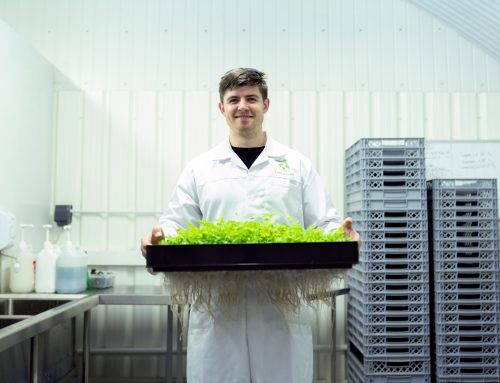16 February 2024
In the heart of honey production, where nature’s sweetness meets human craftsmanship, ensuring the purity and quality of this golden elixir is a timeless pursuit. In this exploration, we uncover the profound impact of the h-ALO Project on honey production, focusing on the sensor’s role in preserving the authenticity and quality of this beloved nectar.

Honey, often celebrated for its natural sweetness and numerous health benefits, is unfortunately not immune to contamination. Contaminants in honey can originate from various sources, and the h-ALO sensor developed in the project is uniquely positioned to address these concerns. But what are the possible contaminants of honey? There are many, actually:
1. Pesticides:
- Source: Agricultural practices involving the use of pesticides.
- Risk: Residues of pesticides may find their way into honey and pose health risks.
2. Antibiotics:
- Source: Used in beekeeping to prevent diseases.
- Risk: Residual antibiotics can be present in honey, potentially contributing to antibiotic resistance.
3. Heavy Metals:
- Source: Contamination from the soil or air where plants are pollinated by bees.
- Risk: Accumulation of heavy metals like lead and cadmium, which can be harmful if ingested.
4. Microbial Contaminants:
- Source: Bees, handling processes, or unhygienic storage conditions.
- Risk: Bacteria, molds, and yeasts may affect honey quality.
5. Adulteration:
- Source: Deliberate addition of other substances like syrups or sugars.
- Risk: Dilution of honey’s nutritional value and potential health concerns.
6. Environmental Toxins:
- Source: Contamination from pollution, including air and water pollution.
- Risk: Presence of pollutants that can compromise honey quality.

Pure honey is more than just a sweetener; it shows nature’s brilliance and the meticulous efforts of beekeepers. The halo Project aligns with the intrinsic values of honey production, aiming to preserve the essence of pure honey by safeguarding it against contaminants. Beekeepers, the custodians of this sweet tradition, may find in the h-ALO sensor a silent partner that enhances their craftsmanship. With its unobtrusive yet powerful capabilities, the sensor enables beekeepers to navigate the nuances of honey production with confidence.
Just as bees perform a meticulous dance to create honey. It works seamlessly in the background, allowing beekeepers to maintain the integrity of their honey without disrupting the natural dance of the bees. Also, honey is a symphony of flavors, each note representing the unique floral sources visited by bees.

In a world of ever-evolving technology, the h-ALO Project strikes a delicate balance between tradition and innovation. It acknowledges the rich history of honey production while embracing advanced tools that serve as guardians, ensuring that the tradition of pure, high-quality honey lives on.






Leave A Comment